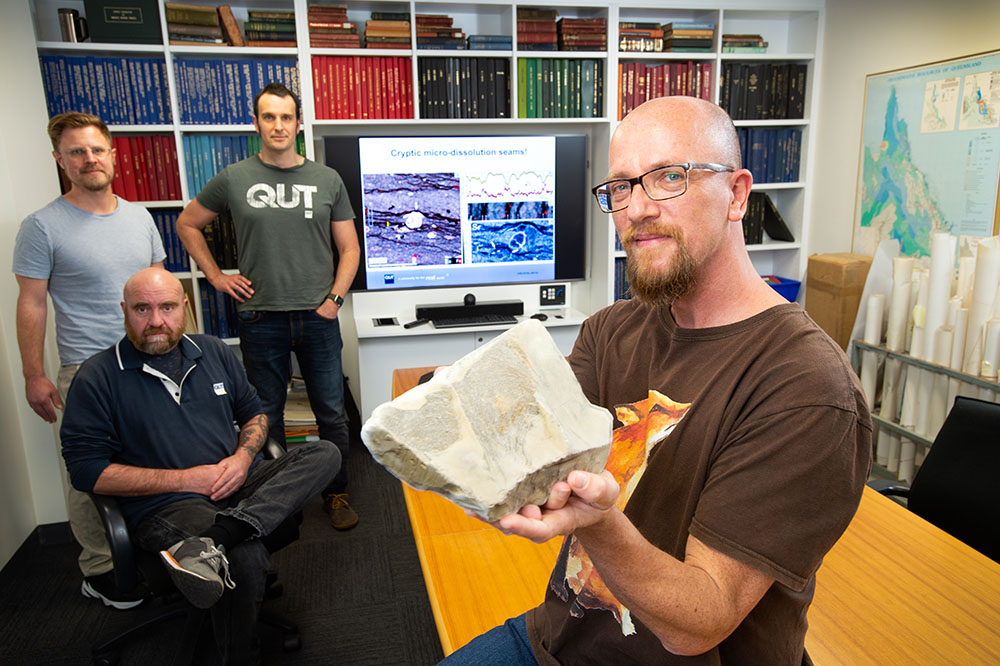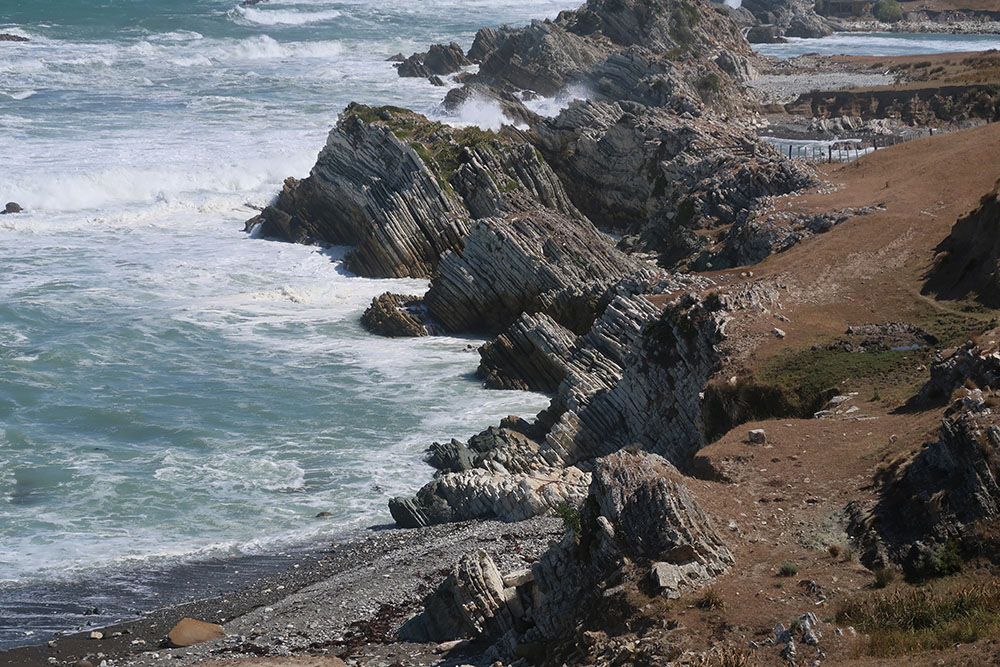A team of scientists has discovered microscopic dissolution seams that dissolve about 10 percent of the carbon in ancient deep-sea limestones where most of the world's carbon is stored.
- Ancient deep-sea limestones' role in carbon cycle probed
- Sophisticated synchrotron X-ray microscopy showed thousands of micro-dissolution seams in limestone layers
- Micro-dissolution seams dissolve about 10 per cent of the total carbon of the limestones studied
The research team, led by Dr Christoph Schrank from QUT's School of Earth and Atmospheric Sciences, Dr Michael Jones from QUT's Central Analytical Research Facility, and Australian Nuclear Science and Technology Organisation (ANSTO) synchrotron scientist Dr Cameron Kewish, published their findings in the Nature journal Communications Earth and Environment.
Dr Schrank said deep-sea limestones had been the Earth's largest carbon sink for the past 180 million years because they trapped most of the planet's carbon.
"However, their contribution to the long-term carbon cycle is poorly quantified," he said.
"Measuring the amount of carbon captured in deep-sea limestones is fundamental to understanding the long-term carbon cycle - how carbon is exchanged between the atmosphere, the oceans, the biosphere, and the rocky bones of the Earth itself over thousands to millions of years.
"Scientists try to unravel the carbon cycle in order to understand important processes such as climate change. To do that, we need to estimate how much carbon the limestones can really trap."

Dr Schrank said they used high-resolution chemical and structural maps to work out that these micro-dissolution seams were ultrathin layers along which large amounts of calcium carbonate had dissolved away.
"While individual micro-dissolution seams are much thinner than a human hair, their spacing is incredibly dense - the average distance between two seams is about a hair's breadth," Dr Schrank said.
"We put this geometric information and mass-balance estimates together to work out that the micro-dissolution seams dissolved about 10 per cent of the total carbon of the limestones in our study.
"Published mathematical models of limestone dissolution and geological evidence suggest that this dissolution process occurred within 10 cm to 10 m below the sediment over 50 to 5000 years."
Where the dissolved carbon goes is not yet known for sure. Dr Schrank said the limestones they studied were formed near an extremely tectonically active region off the North Island's east coast.

"For the past 25 million years, and even today, this region is regularly shaken up by earthquakes, which are known to stir up sediments at the ocean floor.
"We suggest that the dissolved carbon could be returned to the ocean when the seafloor is disturbed by earthquakes or underwater landslides."
The research team from QUT, ANSTO, University of Queensland, University of New South Wales, and La Trobe University discovered the micro-seams using the extremely powerful X-rays of the ANSTO Australian Synchrotron.
"The team at ANSTO, QUT, and La Trobe University developed cutting-edge X-ray microscopy techniques at the Australian Synchrotron over the past decade to probe the chemical composition and structure of materials down to tens of nanometres," Dr Kewish said.
"The synchrotron produces light more than a million times brighter than the sun, and X-ray microscopy allows us to see features that have previously remained invisible."

Dr Jones said: "Applying these novel techniques to sections of 55-million-year-old limestones from the east coast of the North Island of New Zealand enabled us to see, for the first time, that layers of limestone contain thousands of tiny micro-dissolution seams that are practically invisible to other microscopic techniques."
Dr Schrank said the team planned to examine other limestone deposits around the world with high-resolution synchrotron techniques to better understand how micro-dissolution contributes to carbon exchange between the sediment and the ocean.
Micro-scale dissolution seams mobilise carbon in deep-sea limestones was published in the Nature journal Communications Earth and Environment.






